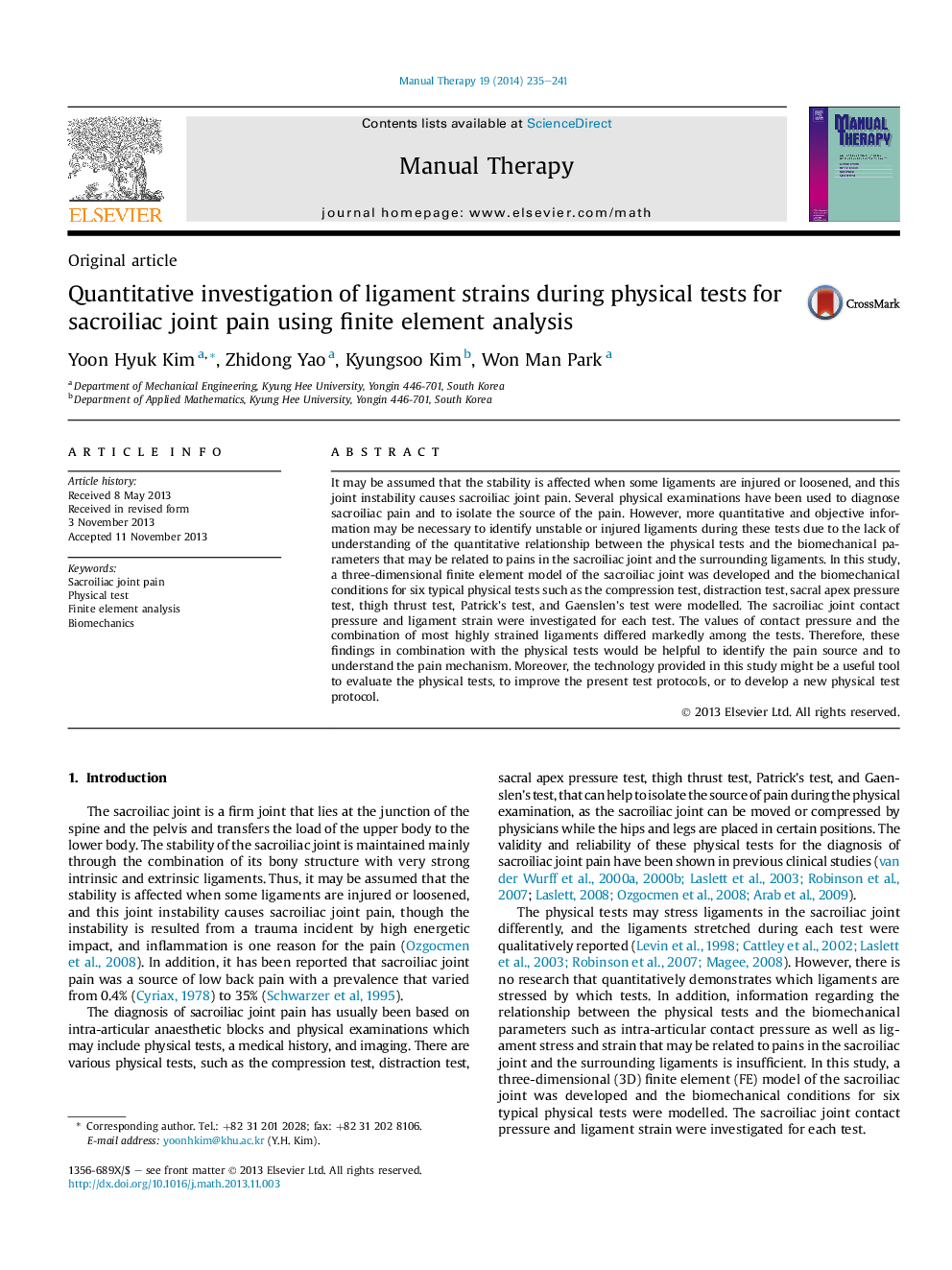| Article ID | Journal | Published Year | Pages | File Type |
|---|---|---|---|---|
| 2625342 | Manual Therapy | 2014 | 7 Pages |
It may be assumed that the stability is affected when some ligaments are injured or loosened, and this joint instability causes sacroiliac joint pain. Several physical examinations have been used to diagnose sacroiliac pain and to isolate the source of the pain. However, more quantitative and objective information may be necessary to identify unstable or injured ligaments during these tests due to the lack of understanding of the quantitative relationship between the physical tests and the biomechanical parameters that may be related to pains in the sacroiliac joint and the surrounding ligaments. In this study, a three-dimensional finite element model of the sacroiliac joint was developed and the biomechanical conditions for six typical physical tests such as the compression test, distraction test, sacral apex pressure test, thigh thrust test, Patrick's test, and Gaenslen's test were modelled. The sacroiliac joint contact pressure and ligament strain were investigated for each test. The values of contact pressure and the combination of most highly strained ligaments differed markedly among the tests. Therefore, these findings in combination with the physical tests would be helpful to identify the pain source and to understand the pain mechanism. Moreover, the technology provided in this study might be a useful tool to evaluate the physical tests, to improve the present test protocols, or to develop a new physical test protocol.
